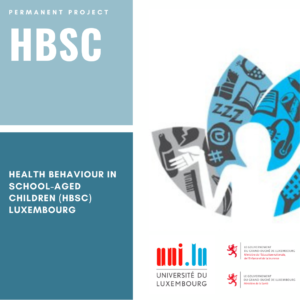The Health Behaviour in School-aged Children (HBSC) Luxembourg risk behaviour report has been published. Focusing on substance use, contraception, problematic use of social media, and bullying, this report is the third of a series of thematic publications that will follow in the next months, based on the 2022 survey.
Corresponding publications Fact sheet Substance Consumption (2023) Policy Brief Substance Consumption (2021) Fact sheet Activité sexuelle et contraception (2018) Infographik Problematische Nutzung sozialer Medien (2022)
Jump to content
HBSC: Health behaviour of school-aged children
HBSC is an international survey collaboration under the aegis of the World Health Organization – Regional Office for Europe, counting with more than 50 countries and regions from Europe, North America and Asia. In Luxembourg, the HBSC study is undertaken in collaboration with the Ministry of Health and Social Security (Health Directorate), the Ministry of Education, Children and Youth (MENJE) and the Centre for Childhood and Youth Research (CCY), of the University of Luxembourg.
Risk behaviours – one of many topics covered by the HBSC Survey 2022
The survey is conducted every 4 years with pupils aged 11 to 18. In 2022, a representative sample of 9,432 pupils from 688 classes and 152 schools took part in the HBSC Luxembourg survey. This report presents findings pertaining to risk behaviours.
Main findings on risk behaviours
- Lifetime prevalence of substance use was: 42.7% for alcohol, 19.1% for smoking tobacco, 24.8% for e-cigarette use, and 21.4% for cannabis use.
- The prevalence of most of the examined risk behaviours has slightly decreased or remained stable since 2018.
- The prevalence of problematic social media users has almost doubled since 2018 from 5.9% to 9.1%. It was higher in girls, 13-14 year old adolescents, and pupils of the classes inférieures of the enseignement secondaire général than in their counterparts.
- The prevalence of risk behaviours increased with age (with the exception of bullying victimisation and perpetration, condom use, and problematic social media use). For instance, 15.1% of the adolescents aged 11-12 reported alcohol consumption whereas they were 75.4% among adolescents aged 17-18.
- Living with both parents was protective against most risk behaviours. For example, 20.9% of the adolescents living with both parents had smoked e-cigarette, compared to 32.4% and 33.1% of those living within a step family or with a single parent, respectively.
- Although partly due to the link between risk behaviours and age, the prevalence of most risk behaviours was higher in pupils of the enseignement secondaire général and formation professionnelle than in pupils of enseignement secondaire classique.
Good to know Lifetime prevalence here means: the proportion of respondents who have observed the risk behaviour in their lifetime. Prevalence here means: the presence or existence of a risk behaviour
Recommendation: risk behaviours of young people should be monitored further
Despite the slight decrease in alcohol and cigarette use between 2018 and 2022, cannabis use and e-cigarette are a source of concern. The HBSC findings can serve as a monitoring tool and support the development and improvement of prevention programs targeting youth and, more specifically, those who present higher prevalence of engaging in risk behaviour.
Useful links HBSC Dashboard on Risk Behaviours www.hbsc.lu
The HBSC Luxembourg risk behaviour report can currently be downloaded from the website www.hbsc.lu, in which interactive data visualization between 2006 and 2022 are also available. The following reports will also be available for download at the same website. They will focus on: Social context, including social support and school environment and; Trends over time and Covid-19 impact on adolescents’ health and well-being.




